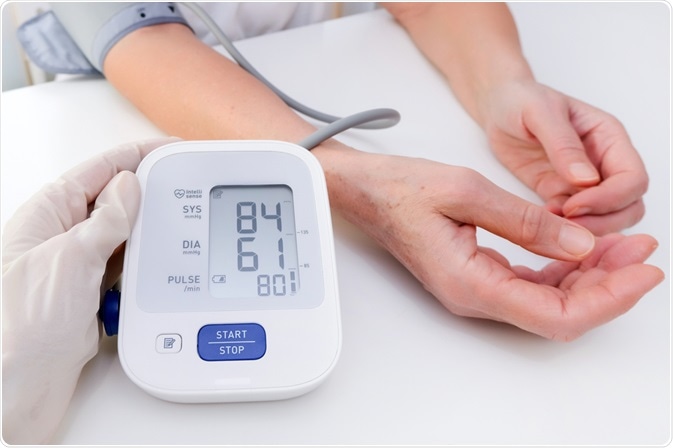Low Blood Pressure: Symptoms, Causes, Treatment
What are the symptoms of low blood pressure?
Low blood pressure, or hypotension, is generally defined as a blood pressure reading lower than 90/60 mmHg. However, symptoms of low blood pressure can vary depending on the individual and the underlying cause. Some common symptoms of low blood pressure include:
- Dizziness or lightheadedness: This is one of the most common symptoms of low blood pressure. It may occur when you stand up quickly from a sitting or lying position (orthostatic hypotension) or after eating a large meal (postprandial hypotension).
- Fainting (syncope): In severe cases of low blood pressure, fainting or passing out may occur. This is more common in older adults.
- Blurred vision: Low blood pressure can sometimes cause blurred vision or tunnel vision.
- Nausea: Some people with low blood pressure may experience nausea or feeling sick to their stomach.
- Fatigue: Low blood pressure can lead to feelings of weakness, tiredness, or fatigue.
- Difficulty concentrating: Some people with low blood pressure may have difficulty concentrating or feel mentally foggy.
- Cold, clammy, pale skin: Low blood pressure can cause the skin to feel cold, clammy, or look pale.
- Rapid, shallow breathing: In some cases, low blood pressure can lead to rapid, shallow breathing.
It’s important to note that some people, particularly athletes, may have naturally low blood pressure and not experience any symptoms. However, if you experience persistent or severe symptoms of low blood pressure, it’s important to see a healthcare provider for an evaluation, as low blood pressure can sometimes be a sign of an underlying medical condition.
What are the causes of low blood pressure?
Low blood pressure, or hypotension, can be caused by a variety of factors, including:
- Dehydration: Not drinking enough fluids can lead to a decrease in blood volume and a drop in blood pressure.
- Medications: Certain medications, such as diuretics, alpha blockers, beta blockers, and some antidepressants, can cause low blood pressure as a side effect.
- Heart problems: Heart conditions such as bradycardia (slow heart rate), heart valve problems, heart attack, or heart failure can lead to low blood pressure.
- Endocrine problems: Disorders such as hypothyroidism, adrenal insufficiency (Addison’s disease), or diabetes can cause low blood pressure.
- Neurological disorders: Conditions such as Parkinson’s disease, multiple system atrophy, or autonomic neuropathy can affect the autonomic nervous system, which controls blood pressure regulation.
- Pregnancy: Low blood pressure is common during pregnancy, especially in the first trimester.
- Blood loss: Severe bleeding, either from an injury or a medical condition, can lead to a decrease in blood volume and low blood pressure.
- Infection: Severe infections, such as sepsis, can cause a drop in blood pressure.
- Allergic reaction: Anaphylaxis, a severe allergic reaction, can cause a drop in blood pressure.
- Nutritional deficiencies: Deficiencies in certain nutrients, such as vitamin B12 and folic acid, can lead to anemia, which can cause low blood pressure.
- Postural changes: Some people experience a drop in blood pressure when they stand up quickly from a sitting or lying position, known as orthostatic hypotension.
It’s important to note that low blood pressure can sometimes be a sign of an underlying medical condition, so it’s important to see a healthcare provider for an evaluation if you experience persistent or severe symptoms of low blood pressure.
What is the treatment for low blood pressure?
The treatment for low blood pressure depends on the underlying cause and the severity of the symptoms. In many cases, lifestyle changes and home remedies can help manage low blood pressure. Some common treatments for low blood pressure include:
- Increasing fluid intake: Drinking more fluids, especially water, can help increase blood volume and raise blood pressure.
- Eating small, frequent meals: Eating small, frequent meals throughout the day can help prevent drops in blood pressure that can occur after eating large meals.
- Avoiding alcohol: Alcohol can lower blood pressure, so limiting alcohol consumption may help raise blood pressure.
- Avoiding standing for long periods: If you experience orthostatic hypotension (a drop in blood pressure when standing up), avoiding standing for long periods and slowly changing positions can help prevent symptoms.
- Wearing compression stockings: Compression stockings can help improve circulation and prevent blood from pooling in the legs, which can help raise blood pressure.
- Increasing salt intake: In some cases, increasing salt intake can help raise blood pressure. However, this should be done under the guidance of a healthcare provider, especially for people with certain medical conditions such as hypertension or kidney disease.
- Medications: In some cases, medications may be prescribed to help raise blood pressure. These may include fludrocortisone, a medication that helps retain salt and water in the body, or medications that increase blood vessel constriction (vasoconstrictors).
It’s important to note that the treatment for low blood pressure will depend on the underlying cause, so it’s important to see a healthcare provider for an accurate diagnosis and appropriate treatment plan. In some cases, low blood pressure may be a sign of an underlying medical condition that requires further evaluation and management.




